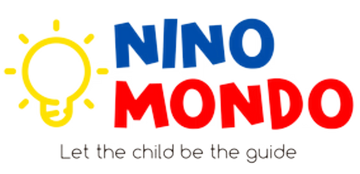
What is a rotation schema and everything else about it?
Picture this: your baby is spinning around in circles, twirling toys, or watching wheels turn. While it might seem like simple play, what they’re really doing is exploring how objects and their own bodies can rotate. This is all part of their natural development, and it’s called the rotating schema!
What are Schemas? Learn more about schemas in detail here.
What is the Rotating Schema?
The Rotating Schema is all about rotation—how things spin, turn, and revolve. This exploration is essential for helping your child understand circular motion, develop motor skills, and learn about the world around them. The fascinating part is that the way babies and older kids engage with this schema can look quite different!
The rotating schema refers to the way young children explore rotational movement. It encompasses behaviours such as spinning objects and themselves, turning wheels, and twirling around. During this period, children are not just playing; they are experimenting with the physical properties of rotation and learning about balance, coordination, and motion.
When Does the Rotating Schema Occur?
The rotating schema typically begins to emerge in infants around the age of 12 to 24 months. During this time, children are naturally curious and eager to explore their surroundings. They engage in repetitive actions, such as spinning tops or turning knobs, which helps them understand how objects behave when they rotate.
Behavioural Indicators of the Rotating Schema
You can recognize the rotating schema in your child through various behaviours, including:
- Spinning Objects: Children will often spin toys or other objects to observe how they move.
- Turning Wheels: Toddlers and older kids may enjoy turning the wheels on toy cars or other objects to see how they rotate. This encourages them to experiment with different speeds and directions.
- Twirling and Spinning: Engaging in activities like twirling around or spinning in circles helps children understand how their own bodies can move in rotational patterns.
Skills Developed Through the Rotating Schema
- Fine and Gross Motor Skills: Repeated actions like spinning and turning objects help strengthen the muscles in your child’s hands and arms, improving their coordination and control.
- Spatial Awareness: As children learn to track rotating objects, they develop a better understanding of circular motion and balance.
- Cognitive Development: The rotating schema encourages problem-solving skills as children experiment with how different objects rotate and react to their actions.
Montessori Activities to Support the Rotating Schema
Incorporating activities that align with the rotating schema can enhance your child’s learning experience. Here are some engaging Montessori-inspired activities to try:
- Spinning Tops: Provide a set of spinning tops for your child to play with. This simple activity encourages them to explore rotational motion and balance.
- Wheel Toys: Use toys with wheels, such as cars or trucks, and encourage your child to turn the wheels and observe their movement.
- Turn and Twist: Provide objects like knobs or lids that your child can turn and twist. This helps them understand how different objects can rotate.
- Dance and Twirl: Encourage your child to dance and twirl around. This helps them explore how their own bodies can move in rotational patterns.
List of Words to Support the Rotating Schema
Spin, Turn, Twirl, Rotate, Revolve, Circle, Swirl, Whirl, Pivot, Twist
Communicating the Understanding of the Rotating Schema Through Language
When engaging with your child during these activities, use encouraging phrases that reinforce their exploration of rotation. Here are some examples:
- “Look how fast the top is spinning!”
- “What happens when you turn the wheel?”
- “Can you twirl around like a ballerina?”
- “Let’s see if we can make the car wheels go round and round!”
Here are a few examples of incorporating the different words and using descriptive language to help them connect their actions with the outcomes, enhancing their understanding of the rotating schema:
- Spin: “Can you spin the top?”
- Turn: “Let’s turn the wheel on the toy car.”
- Twirl: “Twirl around and see how it feels.”
- Rotate: “Rotate the knob to open the door.”
- Revolve: “The planets revolve around the sun.”
- Circle: “Draw a circle with your finger.”
- Swirl: “Swirl the paintbrush in the water.”
- Whirl: “Whirl the ribbon in the air.”
- Pivot: “Pivot on one foot like a dancer.”
- Twist: “Twist the cap to open the bottle.”
For Activity ideas to support your child’s schemas check out our Play Schema Cards.
